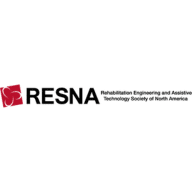Assistive and Rehabilitative Technology Undergraduate Certificate

October 1, 2025
January 12, 2026
Fast-track your career in assistive technology
If you are passionate about caring for, working with, and providing access to assistive technology for people with disabilities, Ohio State’s online Assistive and Rehabilitative Technology Undergraduate Certificate program is a great step for you to start and grow in this field.
In just four online courses, you’ll explore how science and technology can improve the lives of individuals with disabilities. You’ll gain practical skills to deliver cutting-edge assistive technology services and be eligible – among additional requirements – to sit for the ATP certification exam upon completion.
As part of your learning, you’ll also get hands-on experience through Ohio State’s Virtual Assistive Technology Lab, a 360-degree interactive environment built to help online learners engage deeply with real-world tools and scenarios.
Who is this online assistive technology certificate for?
Designed for those currently in health support roles like rehabilitation technicians, personal care assistants, as well as students in undergraduate health sciences, engineering, or special education programs, this 12-credit online undergraduate certificate prepares you to become an Assistive Technology Professional (ATP) and enter this field quickly.
Frequently Asked Questions
Ohio State’s online undergraduate assistive certificate is primarily designed for current rehabilitation technicians or students who are enrolled in an undergraduate engineering, health sciences, or special education program. The online graduate certificate prepares graduate-level students and individuals looking for a post-professional certificate to set themselves apart in their field.
Yes, this program is 100% online, offering flexibility for working professionals like you to study from wherever you are.
Yes, this online program is fully asynchronous, meaning you can log in to view instructional materials and complete your work whenever it is best for your schedule.
Once you submit your contact information, a dedicated Enrollment Advisor will connect with you shortly to provide more details about this online program, provide one-on-one guidance, and answer any questions you may have as you navigate the application process.
Related Program & Content
Related Program & Content

Assistive and Rehabilitative Technology Graduate Certificate
Learn about our graduate certificate program in assistive technology.

What Are the Benefits of an Online Certificate Program?
Online certificate programs are gaining popularity as an affordable and flexible option in higher education.

The Do's and Don'ts of Online Classes
Discover online class tips from Ohio State and learn how online classes work.
Academic Calendar
For the convenience of our online students, multiple start dates are offered during the academic calendar year for our Assistive and Rehabilitative Technology Undergraduate Certificate program.
Academic Calendar
For the convenience of our online students, multiple start dates are offered during the academic calendar year for our Assistive and Rehabilitative Technology Undergraduate Certificate program.
Admission Criteria
The undergraduate Assistive Rehabilitation certificate program is perfect for you if you are currently enrolled in engineering, health sciences or a special education undergraduate programs. Specific application requirements are below:
- Earned high school diploma
- A minimum 2.0 cumulative GPA (on a 4.0 scale) in all coursework taken at all accredited higher education institutions; all post-secondary coursework is considered
Application Materials
To apply for the undergraduate certificate in assistive technology, you must provide the following application materials:
- Copies of official transcripts from each college or university where you have earned credit
- Current CV or resume
- Statement of Purpose addressing the following prompts:
- Why do you want to earn the Assistive and Rehabilitative Technology Certificate (ARTC)?
- What have you done in the past to prepare yourself for the ARTC program?
- What experiences, skills, and attributes do you bring to the program?
- How do you plan on applying the knowledge and skills from the ARTC program in professional practice?

The Ohio State University participates in the State Authorization Reciprocity Agreements (SARA).
SARA is a national initiative that increases student access to distance education courses and programs while maintaining compliance with state regulations. Institutions participating in SARA can offer educational opportunities in all 49 SARA member states, the District of Columbia, the U.S. Virgin Islands and Puerto Rico without seeking individual approval in each state.
California is not a SARA member state, however, OSU may offer online courses and programs to students located in California under the California Private Post-Secondary Act of 2009.
The Application Process
Once you understand your program’s admission criteria, please note the application deadline. You’ll need a quiet space and a variety of materials for your application. To learn more, please see our Admissions page for the full process. Ready to Apply? Find your application here.
Career Outlook
Top Occupations by Median Income
What They Do
Assess, plan, organize, and participate in rehabilitative programs that improve mobility, relieve pain, increase strength, and improve or correct disabling conditions resulting from disease or injury.
Work Activities
Plan, prepare, or carry out individually designed programs of physical treatment to maintain, improve, or restore physical functioning, alleviate pain, or prevent physical dysfunction in patients. Perform and document an initial exam, evaluating data to identify problems and determine a diagnosis prior to intervention. Record prognosis, treatment, response, and progress in patient's chart or enter information into computer.
Wage Range
- Entry Level: $74,420
- Mid Level: $101,020
- Senior Level: $132,500
Job Outlook
Bright
Projected Growth
14.2%
Related Careers
- Advanced Practice Psychiatric Nurses
- Clinical Nurse Specialists
- Emergency Medicine Physicians
- Occupational Therapists
- Physical Medicine and Rehabilitation Physicians
Job Sectors
- Customer and Personal Service
- Therapy and Counseling
- Medicine and Dentistry
- Psychology
- Education and Training
What They Do
Assist physical therapists in providing physical therapy treatments and procedures. May, in accordance with state laws, assist in the development of treatment plans, carry out routine functions, document the progress of treatment, and modify specific treatments in accordance with patient status and within the scope of treatment plans established by a physical therapist. Generally requires formal training.
Work Activities
Instruct, motivate, safeguard, and assist patients as they practice exercises or functional activities. Document patient information, such as notes on their progress. Observe patients during treatments to compile and evaluate data on their responses and progress and provide results to physical therapist in person or through progress notes.
Wage Range
- Entry Level: $46,020
- Mid Level: $65,510
- Senior Level: $87,630
Job Outlook
Bright
Projected Growth
25.4%
Related Careers
- Occupational Therapy Aides
- Occupational Therapy Assistants
- Physical Therapist Aides
- Psychiatric Technicians
- Respiratory Therapists
Job Sectors
- Customer and Personal Service
- Therapy and Counseling
- English Language
- Education and Training
- Psychology
What They Do
Provide individualized physical education instruction or services to children, youth, or adults with exceptional physical needs due to gross motor developmental delays or other impairments.
Work Activities
Adapt instructional techniques to the age and skill levels of students. Instruct students, using adapted physical education techniques, to improve physical fitness, gross motor skills, perceptual motor skills, or sports and game achievement. Provide individual or small groups of students with adapted physical education instruction that meets desired physical needs or goals.
Wage Range
- Entry Level: $43,220
- Mid Level: $67,430
- Senior Level: $109,360
Job Outlook
Below Average
Projected Growth
2.1%
Related Careers
- Special Education Teachers, Elementary School
- Special Education Teachers, Kindergarten
- Special Education Teachers, Middle School
- Special Education Teachers, Preschool
- Special Education Teachers, Secondary School
Job Sectors
- Education and Training
- Psychology
- English Language
- Therapy and Counseling
- Customer and Personal Service
What They Do
Provide therapy to patients with visual impairments to improve their functioning in daily life activities. May train patients in activities such as computer use, communication skills, or home management skills.
Work Activities
Teach cane skills, including cane use with a guide, diagonal techniques, and two-point touches. Recommend appropriate mobility devices or systems, such as human guides, dog guides, long canes, electronic travel aids (ETAs), and other adaptive mobility devices (AMDs). Train clients with visual impairments to use mobility devices or systems, such as human guides, dog guides, electronic travel aids (ETAs), and other adaptive mobility devices (AMDs).
Wage Range
- Entry Level: $67,090
- Mid Level: $98,340
- Senior Level: $129,830
Job Outlook
Bright
Projected Growth
11.1%
Related Careers
- Occupational Therapists
- Occupational Therapy Aides
- Occupational Therapy Assistants
- Recreational Therapists
- Rehabilitation Counselors
Job Sectors
- English Language
- Education and Training
- Psychology
- Transportation
- Customer and Personal Service
National occupational information in Ohio State Online’s Career Outlook tool is sourced from O*NET Online and the U.S. Bureau of Labor Statistics (BLS). The median annual wage displayed to the right of each occupational title above is based on the BLS Employment Projections program. Outlook and percent change indicate projected growth or decline over the next 10 years.
Curriculum
The four courses that make up this undergraduate assistive technology certificate program will provide you with a foundation of knowledge for assistive technology devices, services, strategies and practices to become an assistive technology professional. Expand each course title below to learn more.
Required course:
Introduction to assistive technology and rehabilitation technology for individuals with disabilities and older adults.
Additional courses (select three):
Introduction to seating and mobility – specifically manual wheelchairs, power wheelchairs and scooters – for individuals with disabilities and older adults.
Examination of technology integration for individuals with disabilities, including consumer electronics, emerging technologies, information and communication technologies, and robotic assistive technologies.
Introduction to the technologies that are used in adapted sports and recreation for individuals with disabilities and older adults.
Learn the various modes of AAC, procurement, funding, and intervention for those with complex communication needs secondary to various diagnoses.
Program Faculty
Throughout the undergraduate assistive technology certificate program, students will learn from experts in the field of rehabilitation engineering, occupational therapy, and clinical education.

Carmen P. DiGiovine, PhD, ATP/SMS, RET
Associate Professor – Clinical
Dr. Carmen DiGiovine is clinical professor in the Occupational Therapy Division in the School of Health and Rehabilitation Sciences at The Ohio State University. As a rehabilitation engineer and assistive technology professional (ATP), Dr. DiGiovine’s professional goal is to improve the quality of life of individuals with disabilities through the application of science and technology. He accomplishes through his research, teaching, and service activities.
Amy Sonntag, SLPD, CCC-SLP
Clinical Associate Professor
Anand Mhatre, PhD
Assistant Professor
Tuition Fee Overview
Investing in your future with a higher education degree is one of the best investments you can make for your future success. At Ohio State, we know understanding your program’s cost is an important part of your decision-making process. Below are the tuition fees you can expect with your program, which are estimates based on a 6-credit hour semester as a part-time student.
| Tuition Fees | Part-Time – Per Credit Hour (unless otherwise noted) |
|---|---|
| Instructional Fee | $522.71 |
| General Fee | $23.79 |
| Distance Learning Fee | $100.00 (per semester) |
| Non-Resident Surcharge (if applicable) | $200.00 (per semester) |
| International Surcharge (if applicable) | $129.29 |
Tuition fees are subject to change. The table above serves as a guide and not an official bursar’s bill. Full-Time costs are total tuition costs per semester.
Financial Aid Resource
Financial Aid Resource
Related Articles
Related Articles

How to ask your employer for tuition reimbursement
How to Pay for Your Online Program

Tips for Online Learning from Ohio State Students and Faculty

Proud partner
of RESNA (Rehabilitation Engineering and Assistive Technology Society of North America)
Get Started
Connect with a knowledgeable Enrollment Advisor who can help answer your questions and explain different aspects of the more than 80 online degrees and certificates offered at Ohio State. They are here to help you on your education journey.



